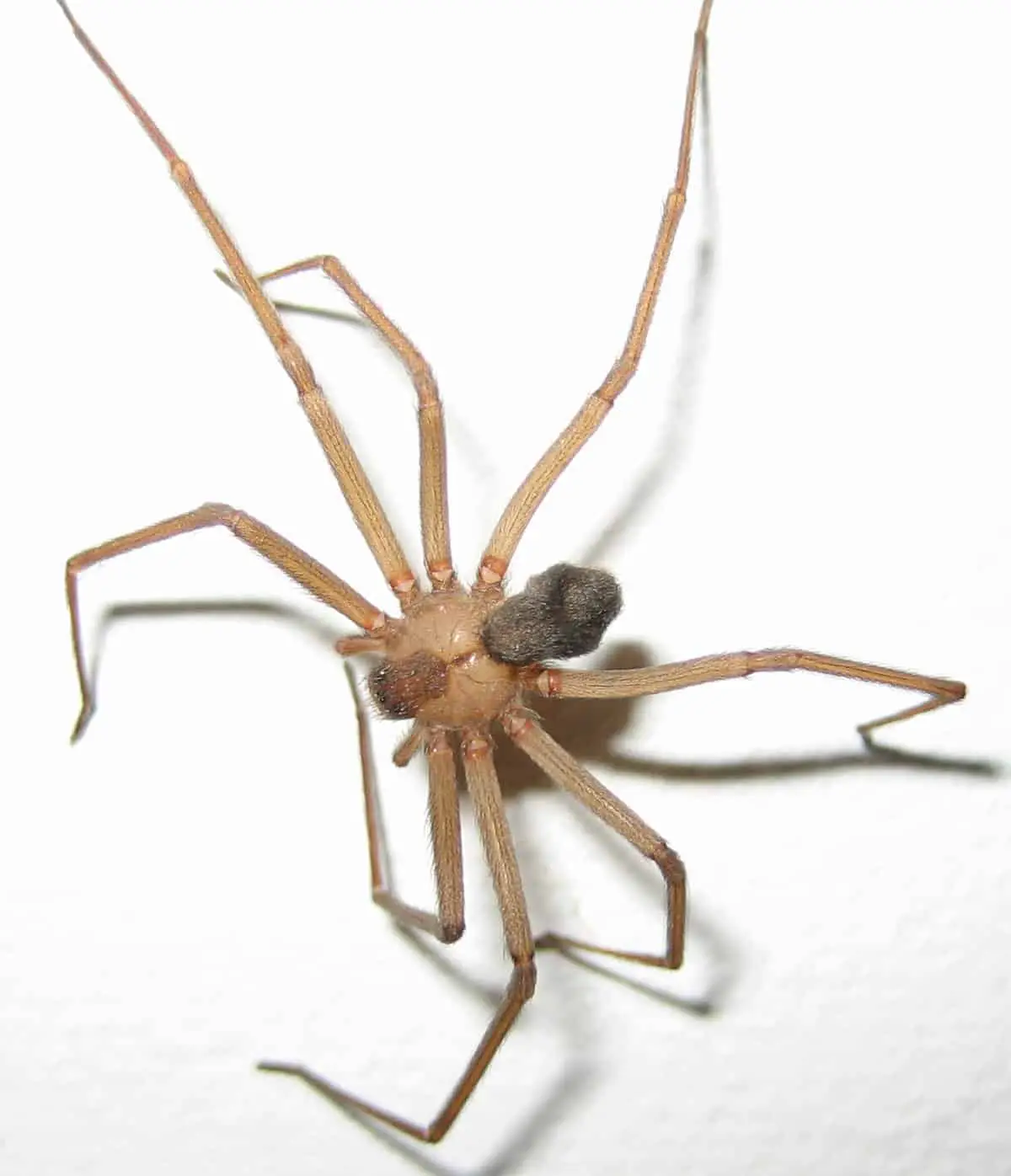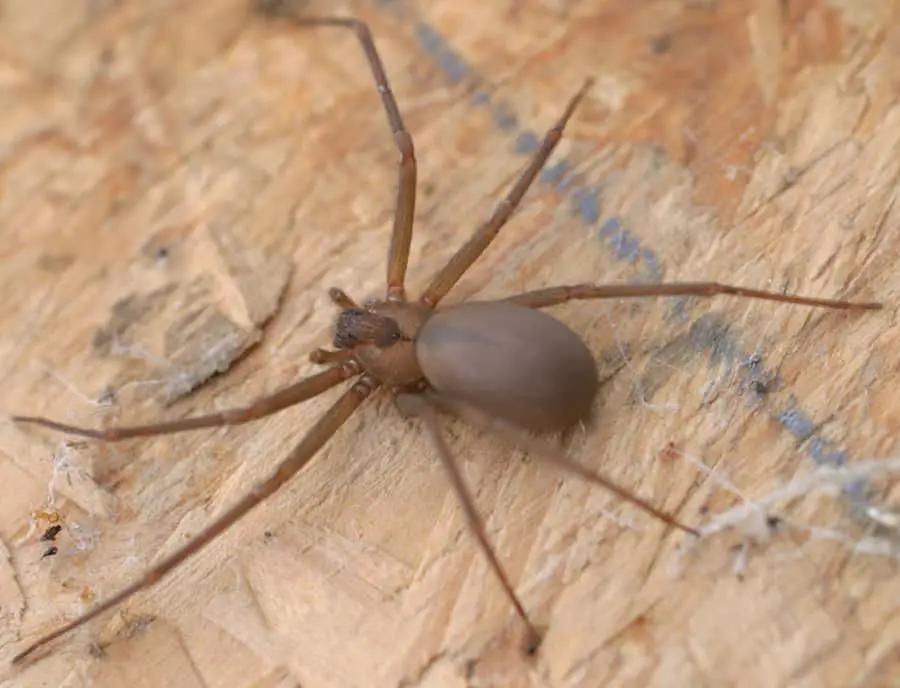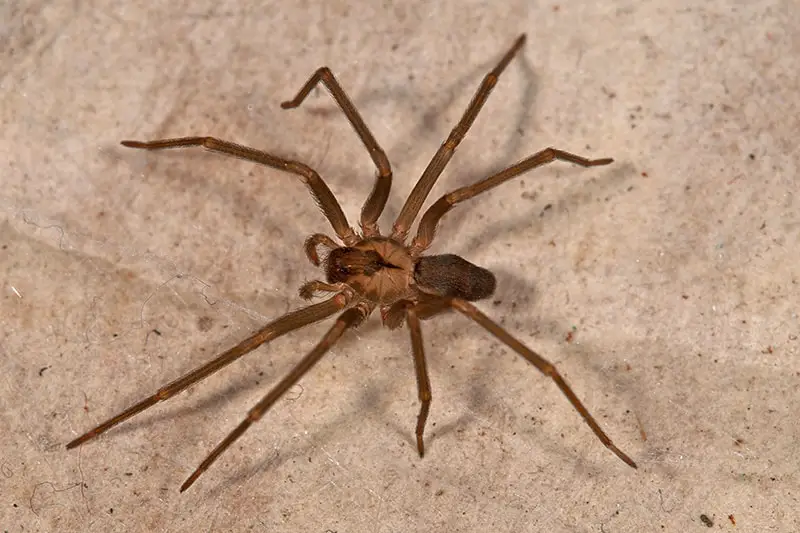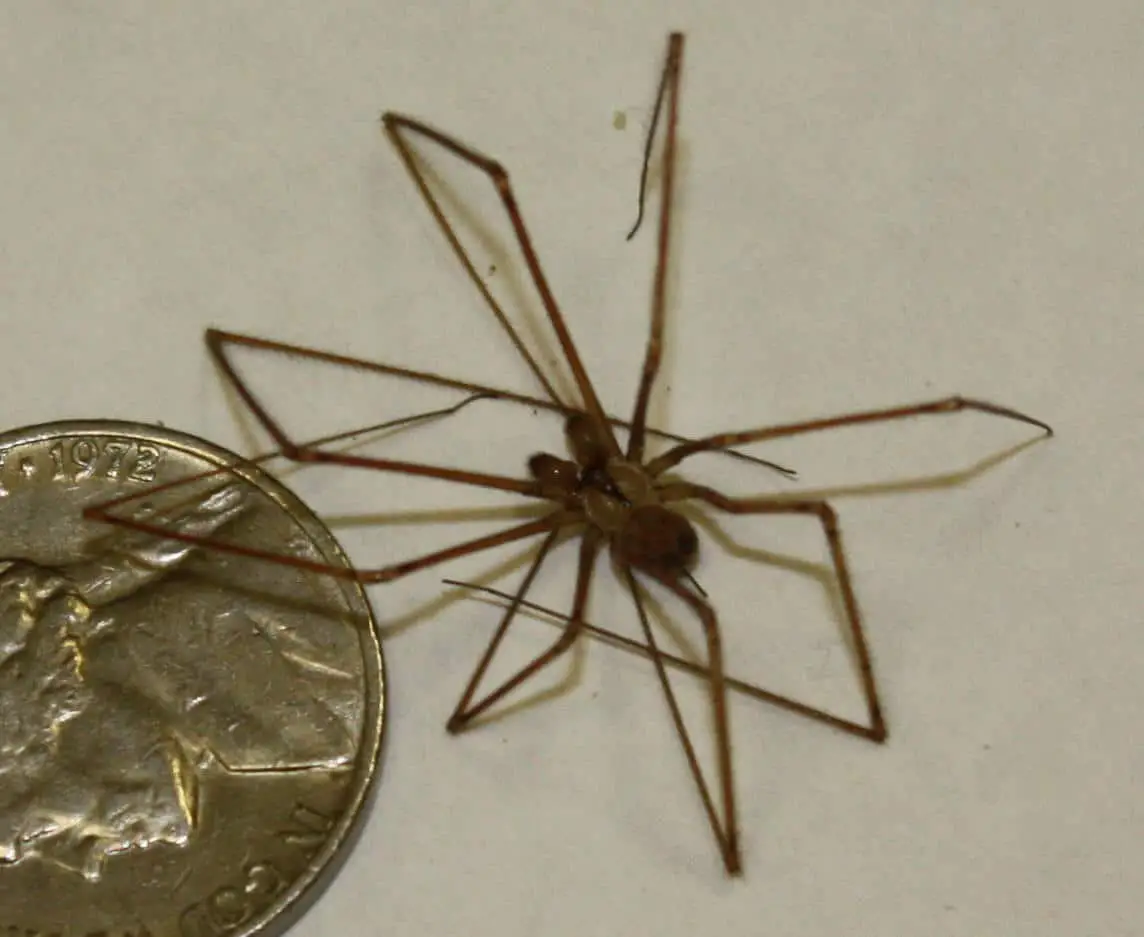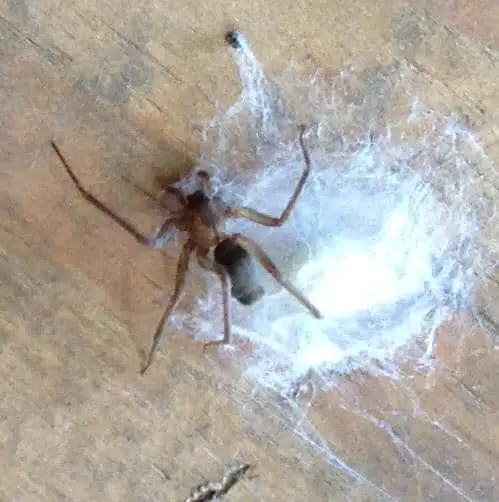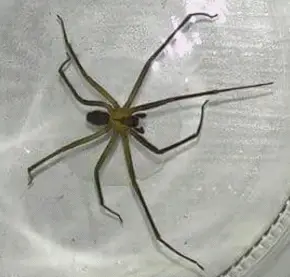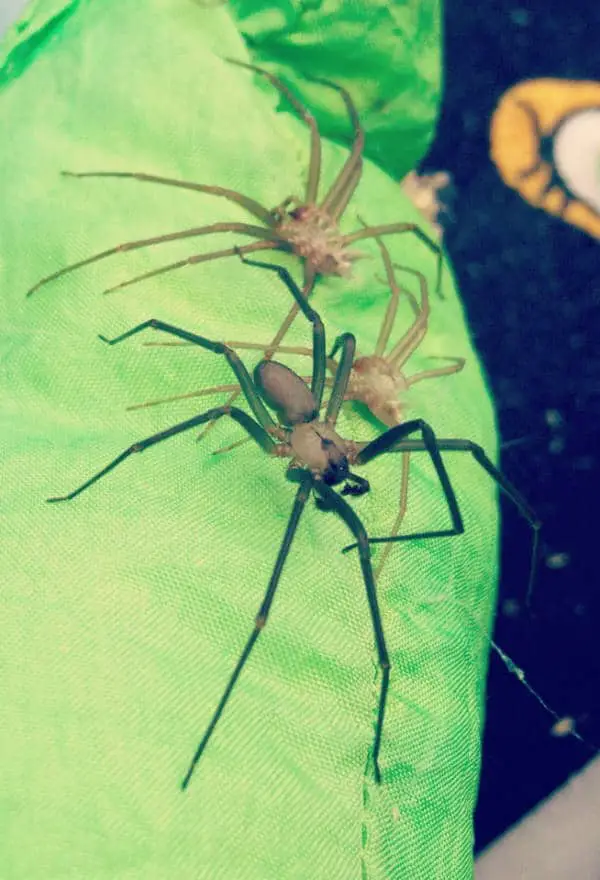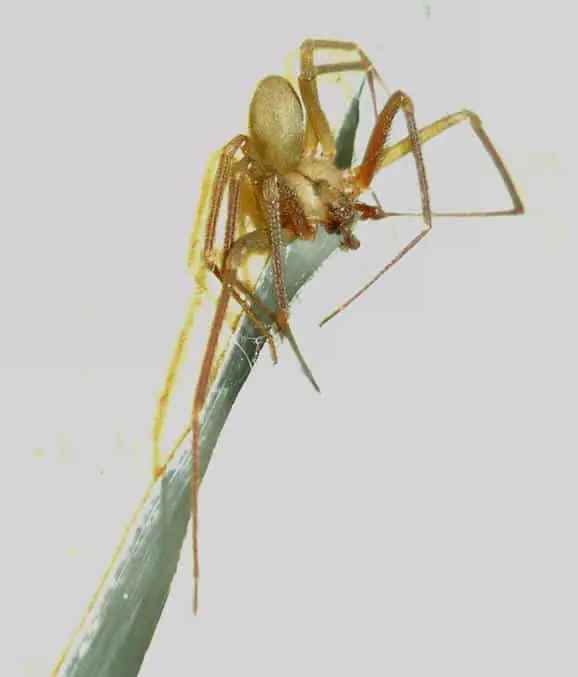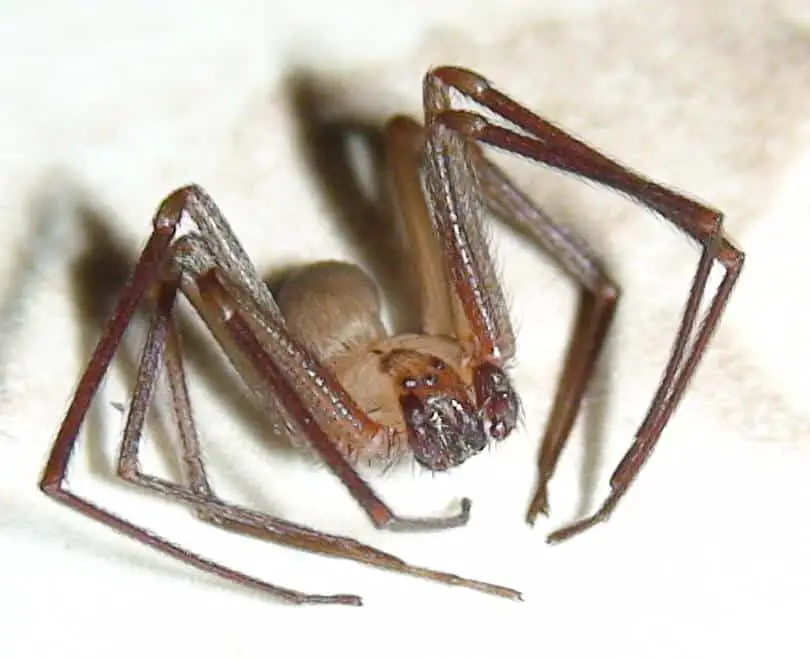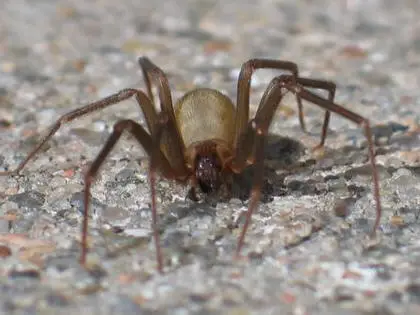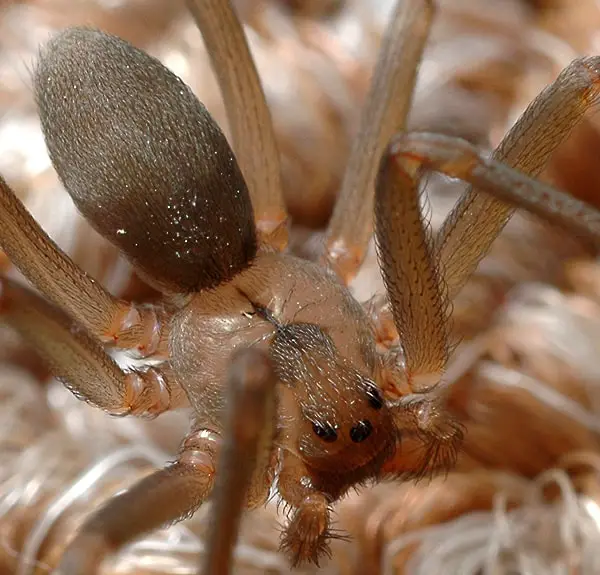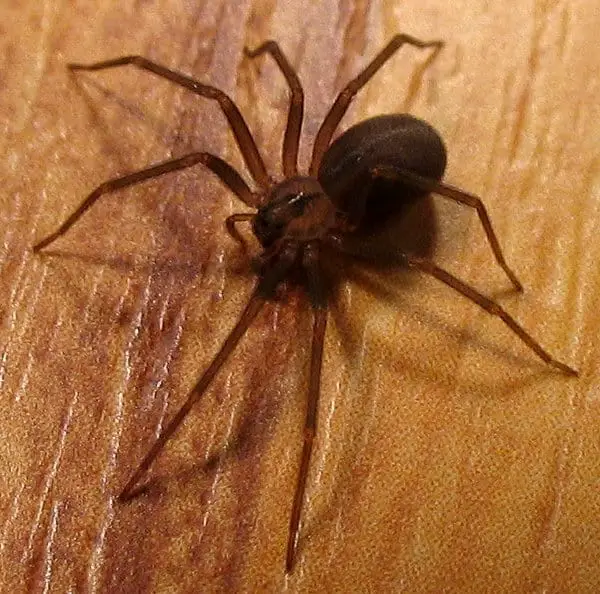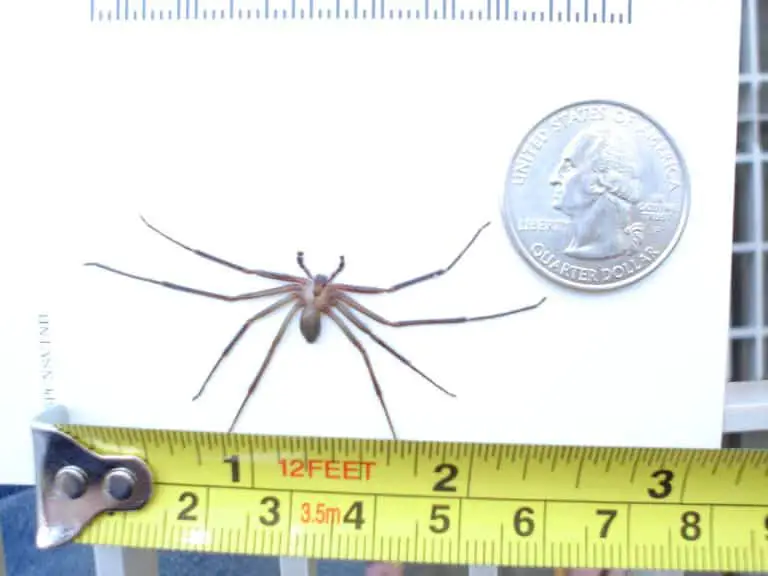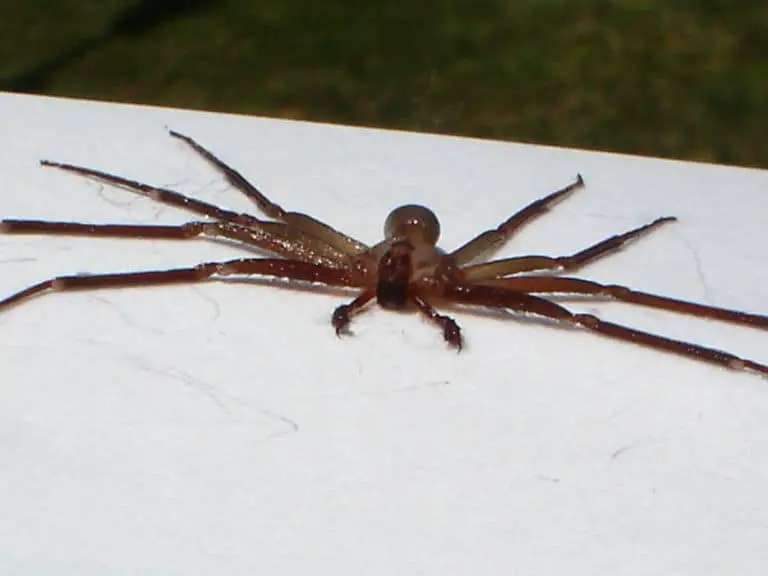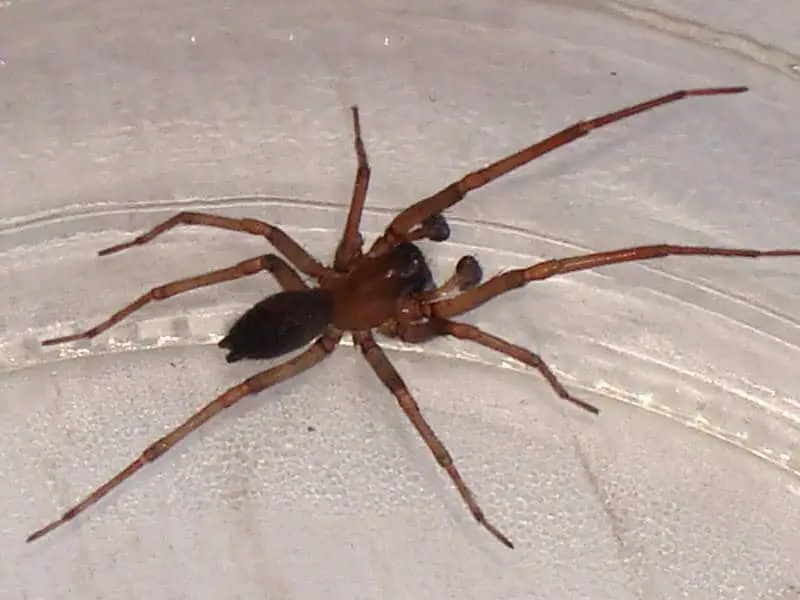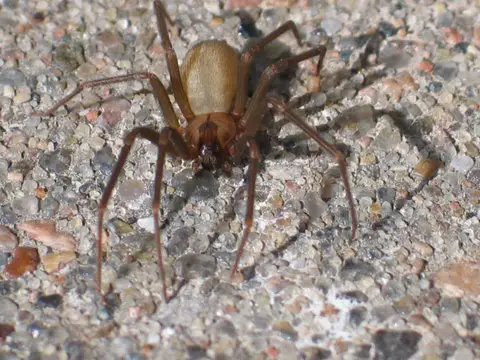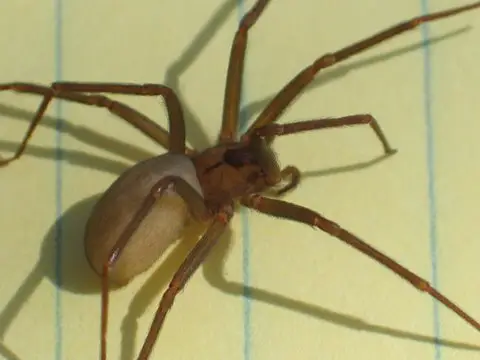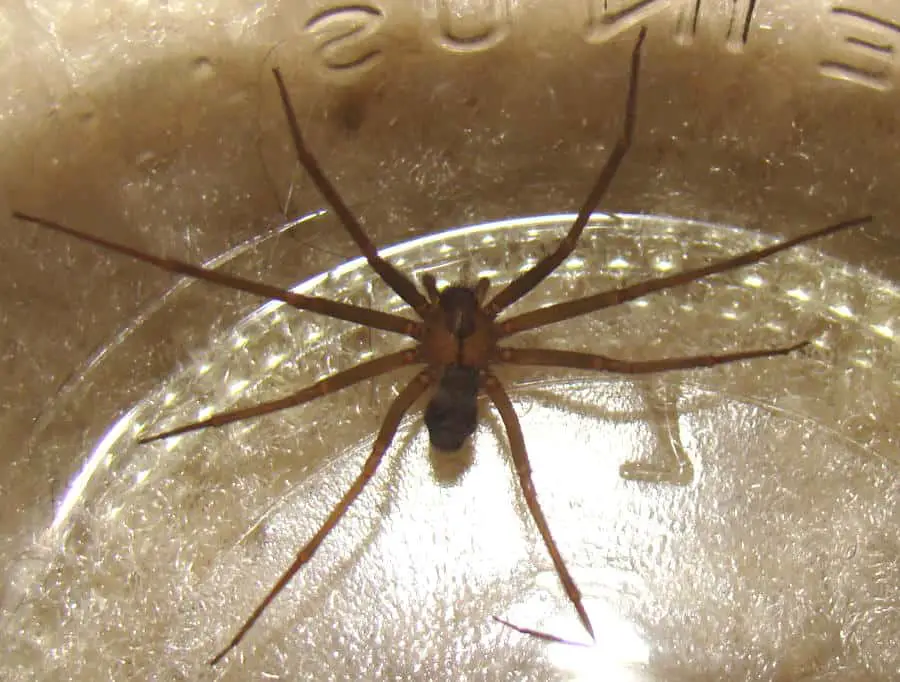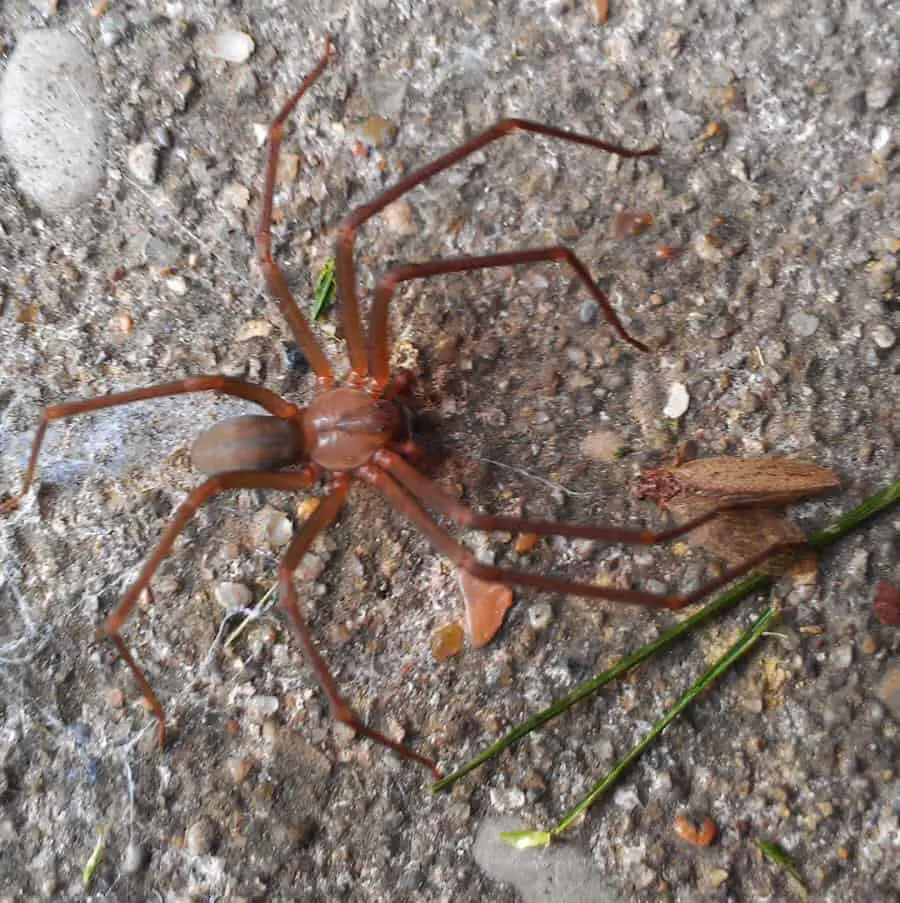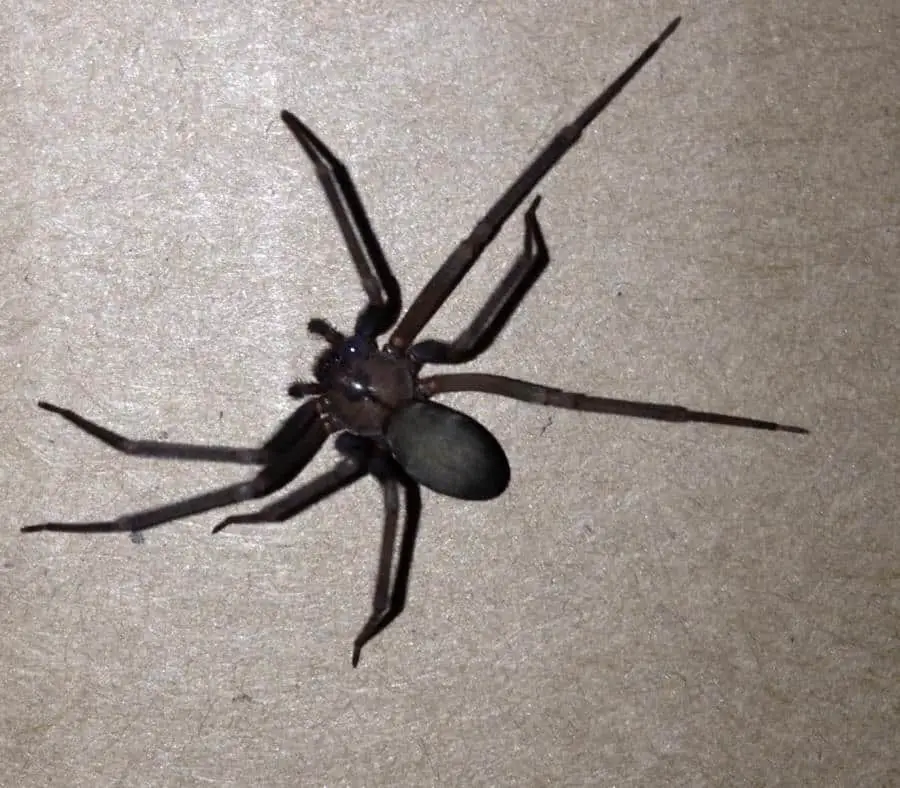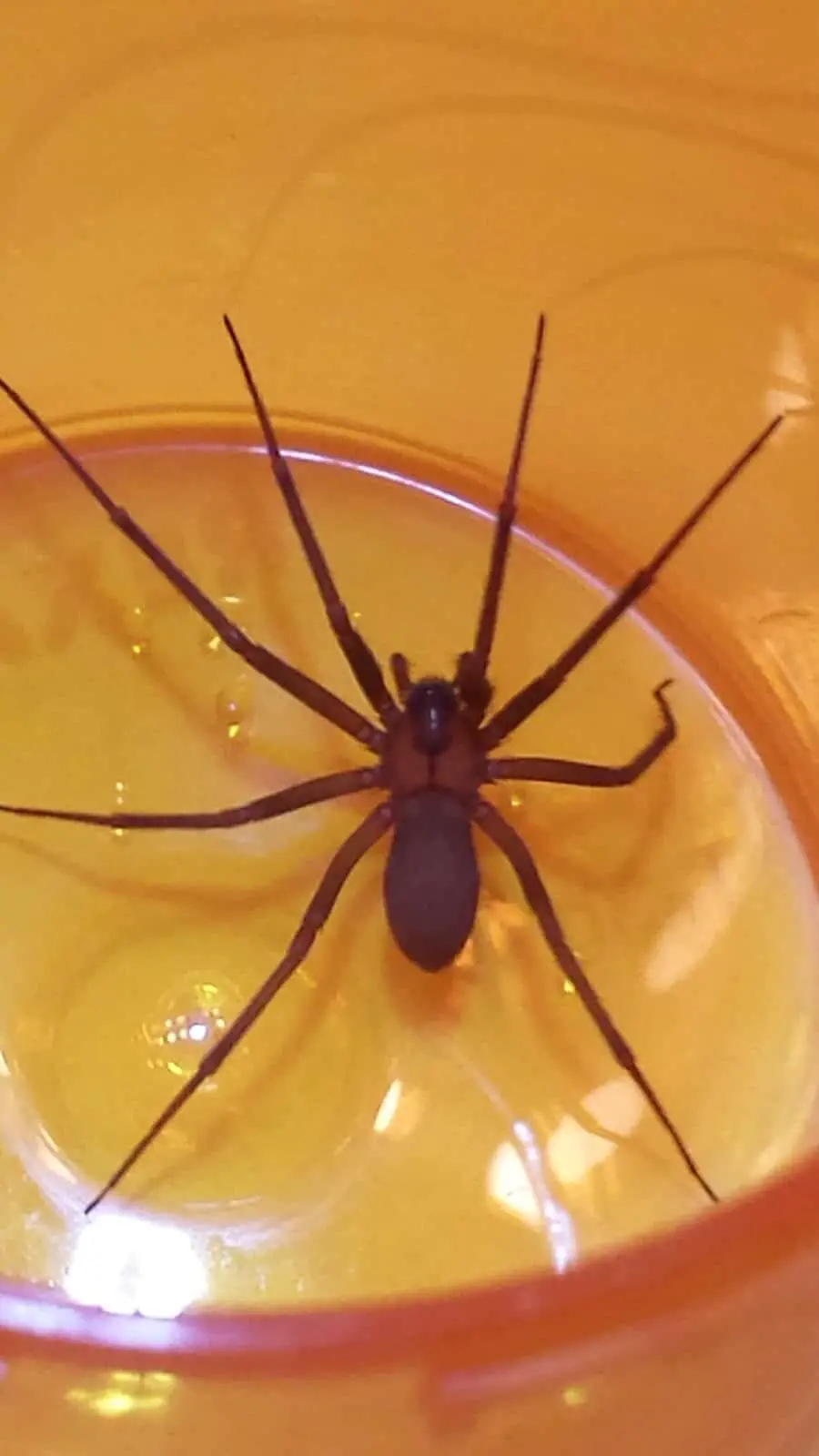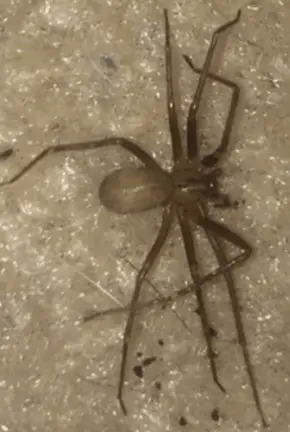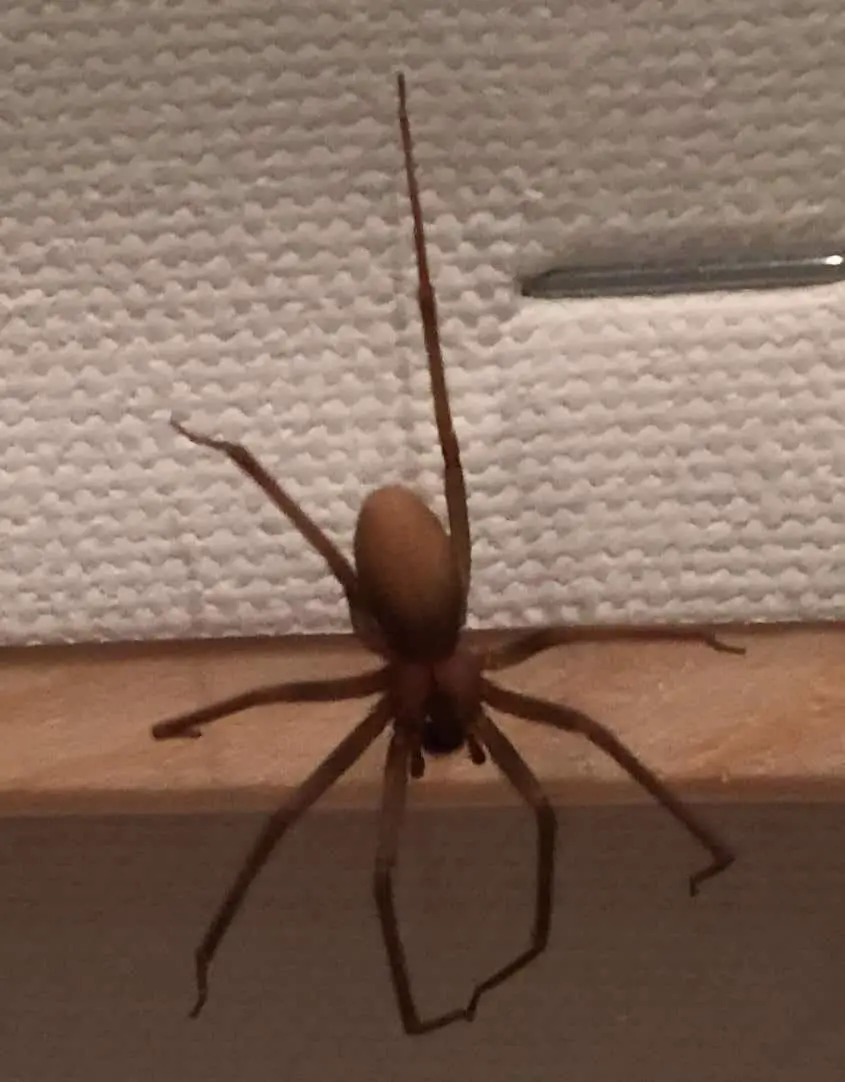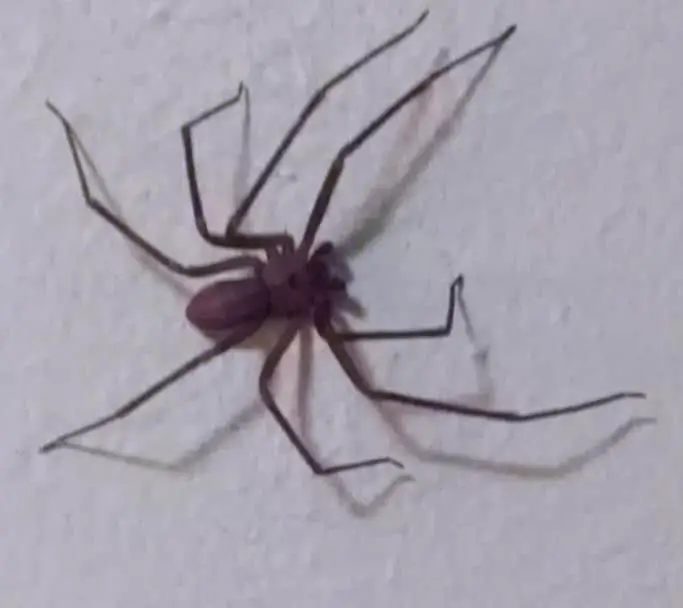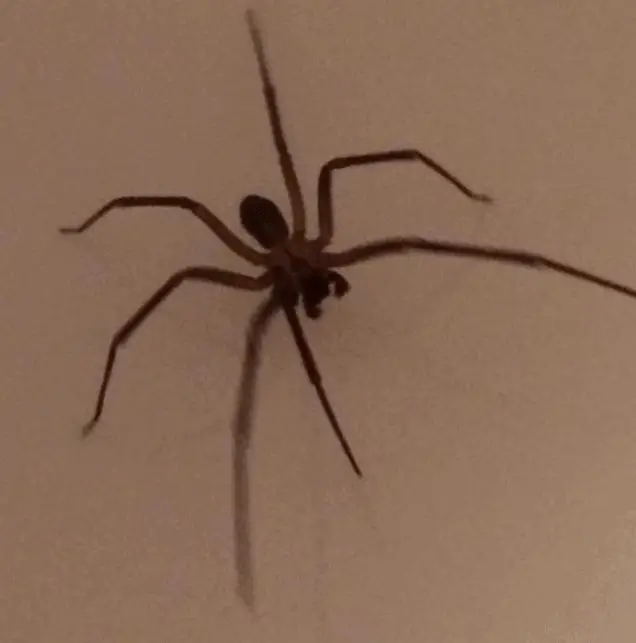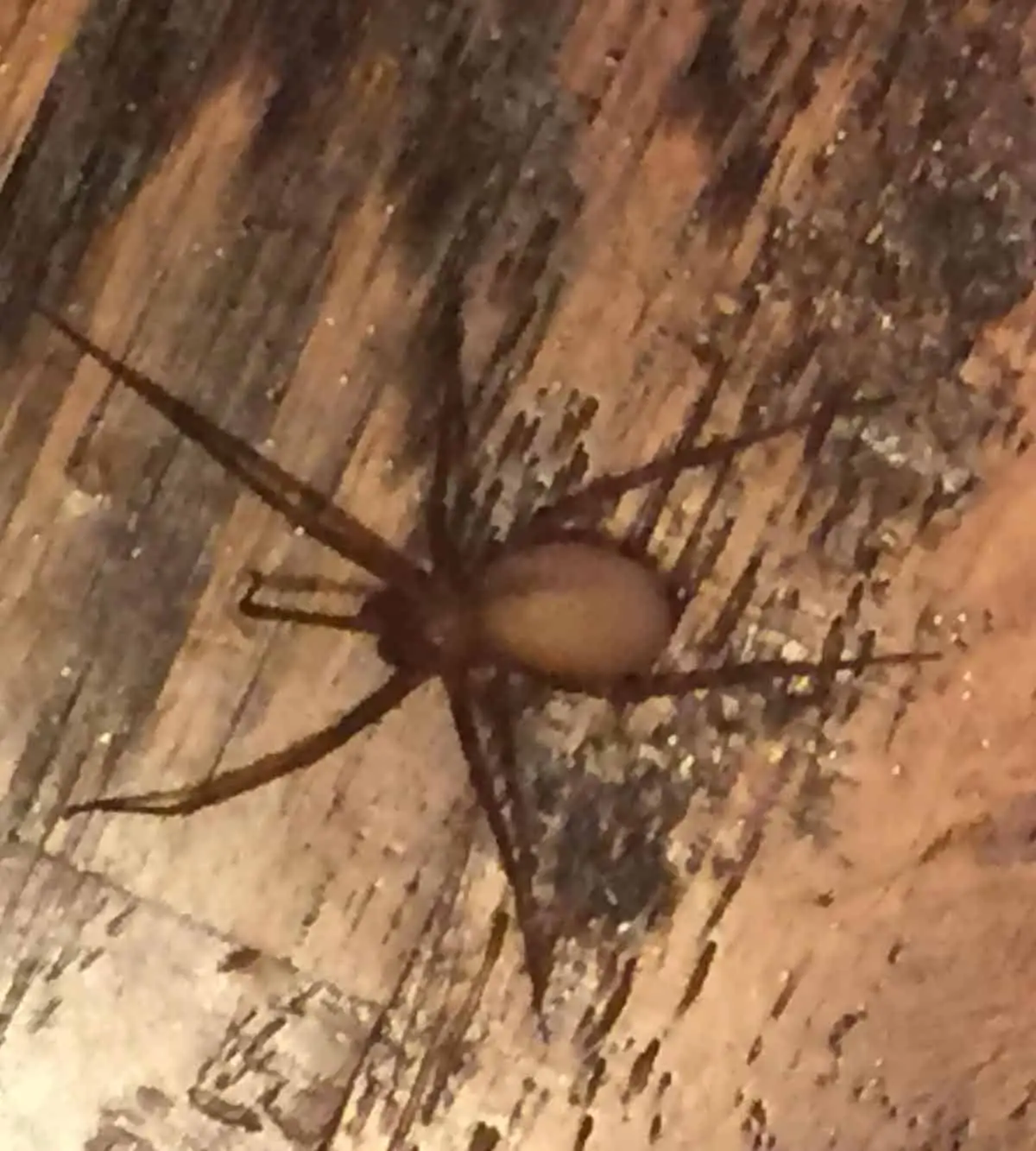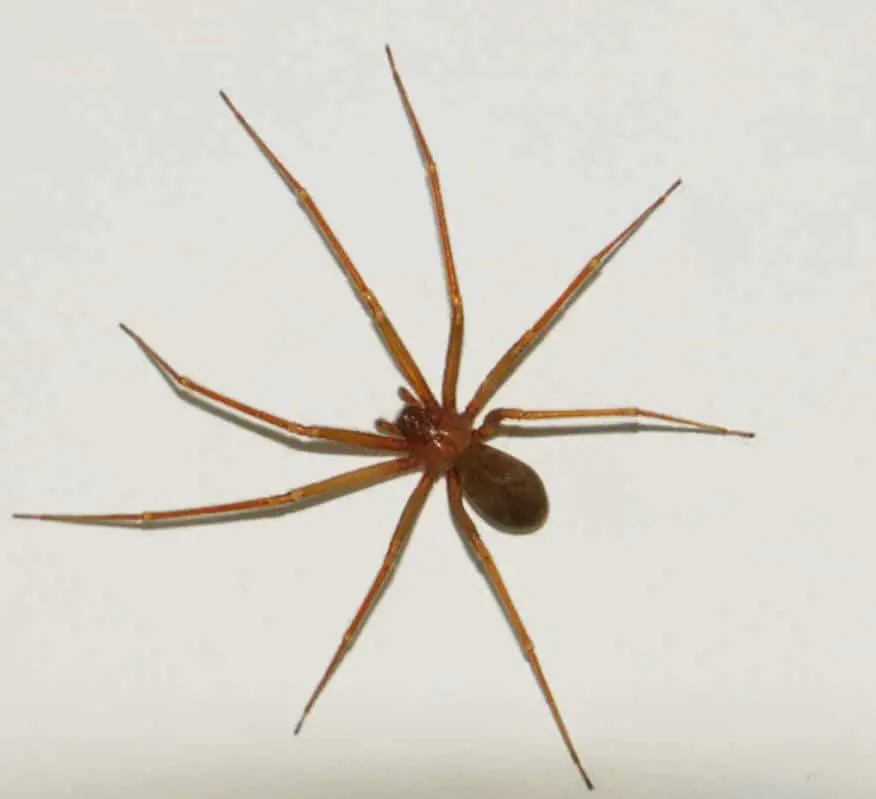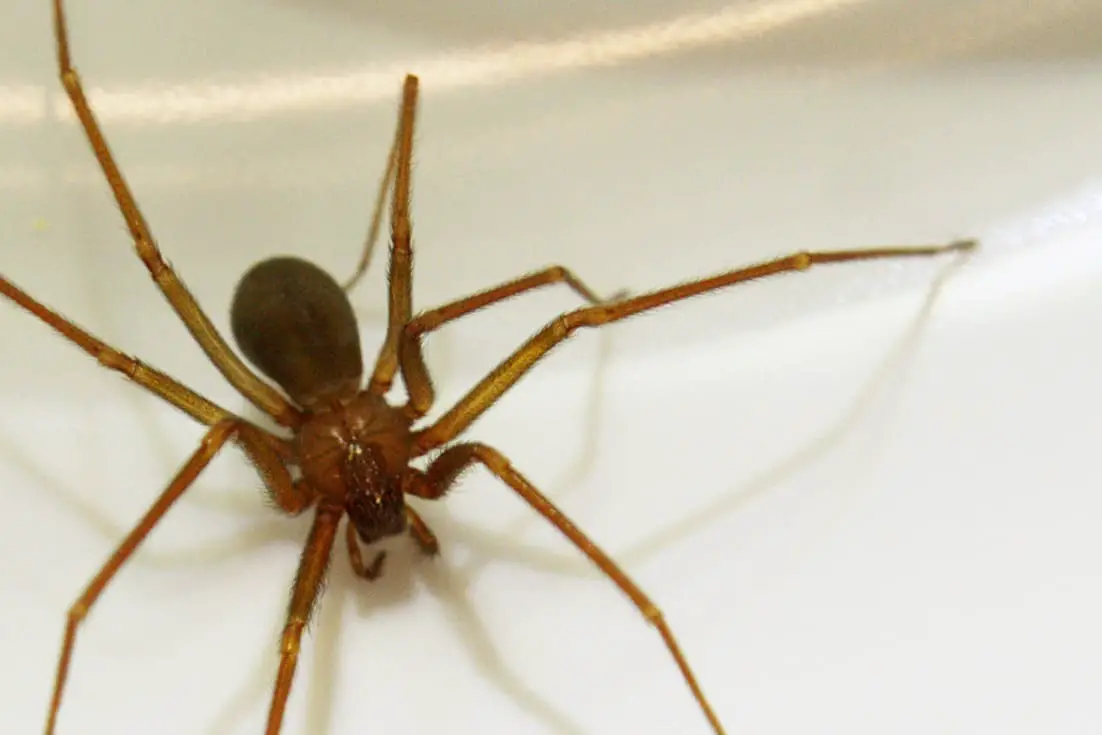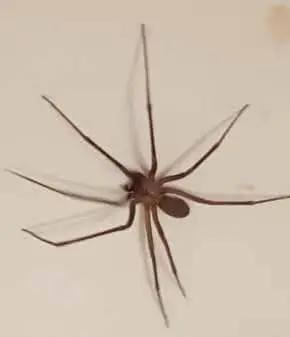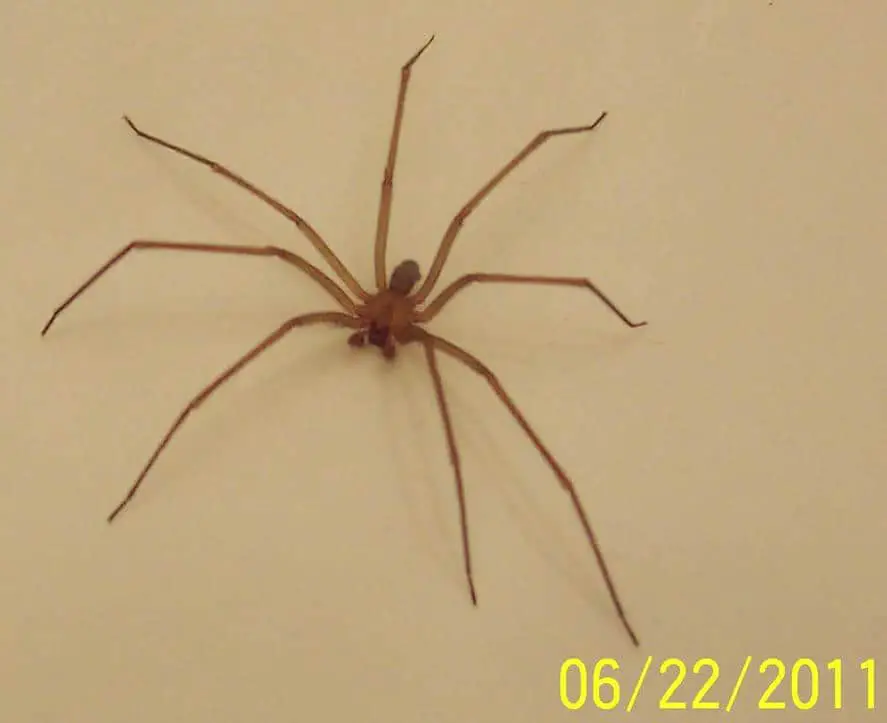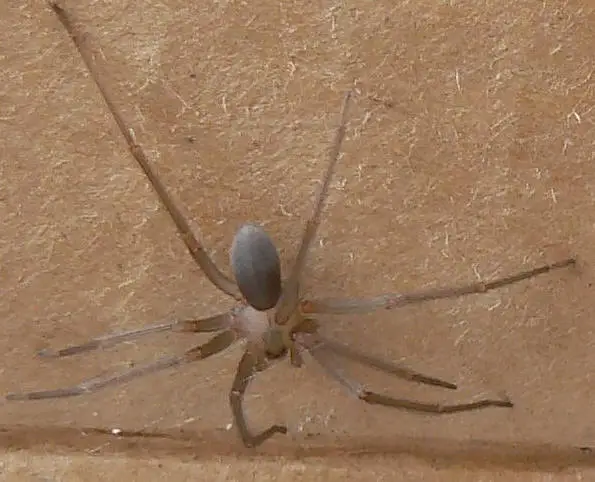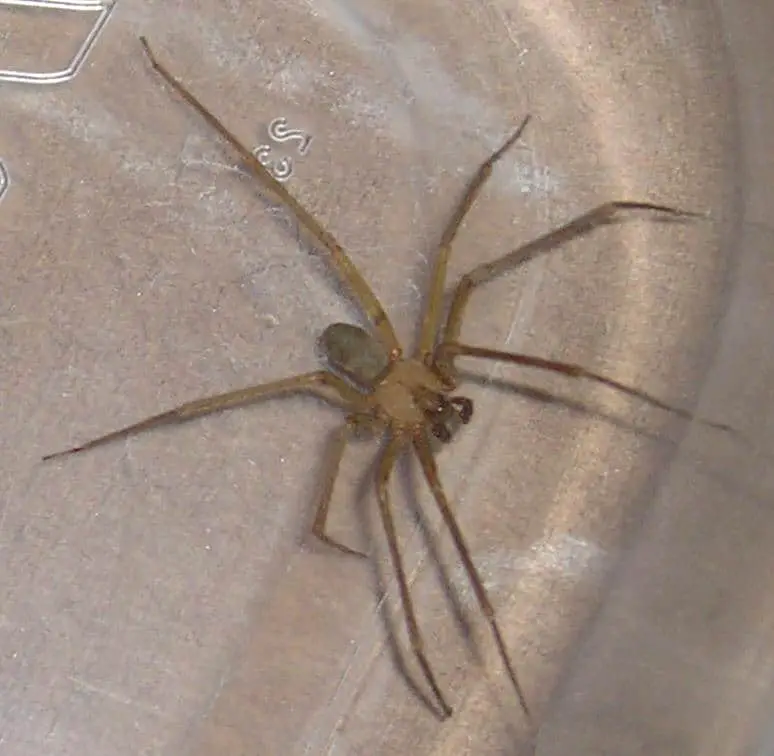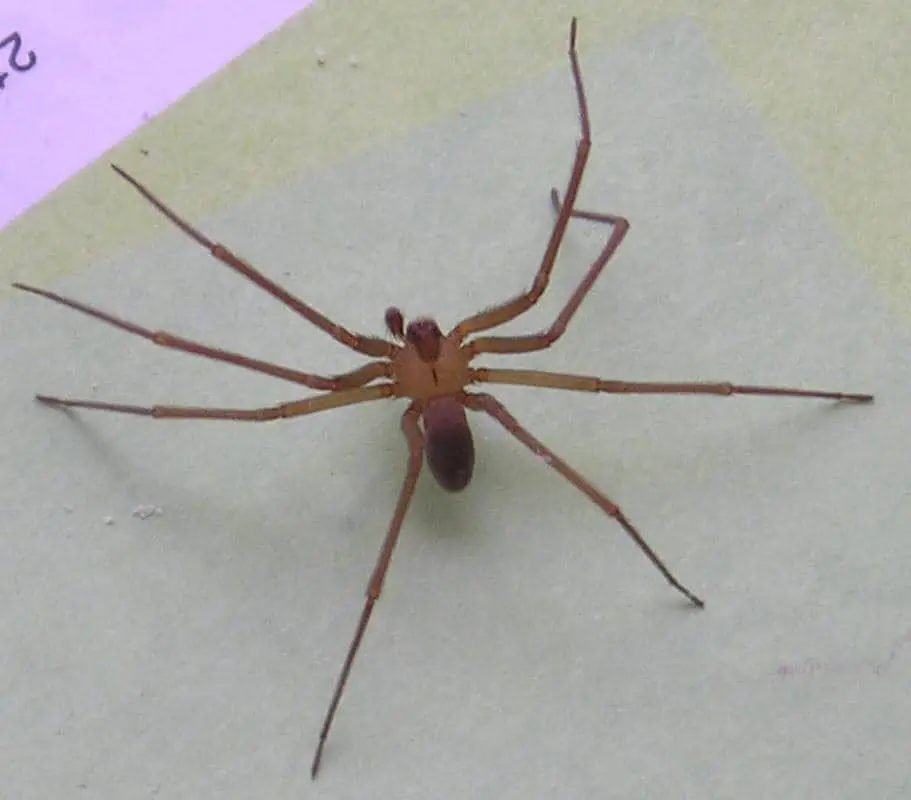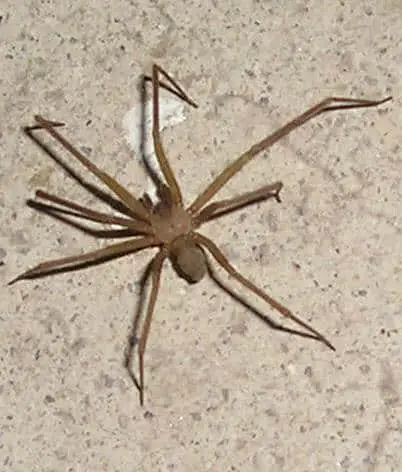Brown Recluse belongs to a group of spiders that is officially known as the “recluse spiders” in the genus Loxosceles (pronounced lox-sos-a-leez). These spiders are also commonly referred to as “fiddleback” spiders or “violin” spiders because of the violin-shaped marking on the top surface of the cephalothorax (fused head and thorax). However, this feature can be very faint depending on the species of recluse spider, particularly those in the southwestern U.S., or how recently the spider has molted. The common name, brown recluse spider, pertains to only one species, Loxosceles reclusa. The name refers to its color and habits. It is a reclusive creature that seeks and prefers seclusion. The brown recluse spider and ten additional species of Loxosceles are native to the United States. In addition, a few non-native species have become established in limited areas of the country. The brown recluse spider is found mainly in the central Midwestern states southward to the Gulf of Mexico.
Click here for a map of the different species of Recluse and their distribution on the United States. Isolated cases in Ohio are likely attributable to this spider occasionally being transported in materials from other states. Although uncommon, there are more confirmed reports of Loxosceles rufescens (Mediterranean recluse) than the brown recluse in Ohio. It, too, is a human-associated species with similar habits and probably similar venom risks (unverified). (Ohio State University Fact Sheet) A great reference page on Brown and Desert Recluse and their identification is here.
In the mature brown recluse spider as well as some other species of recluse spiders, the dark violin marking is well defined, with the neck of the violin pointing toward the bulbous abdomen. The abdomen is uniformly coloured, although the coloration can range from light tan to dark brown, and is covered with numerous fine hairs that provide a velvety appearance. The long, thin, brown legs also are covered with fine hairs, but not spines. Adult brown recluse spiders have a leg span about the size of a quarter. Their body is about 3/8 inches long and about 3/16 inches wide. Males are slightly smaller in body length than females, but males have proportionally longer legs. Both sexes are venomous. The immature stages closely resemble the adults except for size and a slightly lighter colour.
The brown recluse spider spins a loose, irregular web of very sticky, off-white to grayish threads. This web serves as the spider’s daytime retreat, and it often is constructed in an undisturbed corner. This spider roams at night searching for insect prey. Recent research indicates that the brown recluse spider is largely a scavenger, preferring dead insects. Mature males also roam in search of females. Brown recluse spiders generally occupy dark, undisturbed sites, and they can occur indoors or outdoors. In favourable habitats, their populations are usually dense. They thrive in human-altered environments. Indoors, they may be found in attics, basements, crawl spaces, cellars, closets, and ductwork or registers. They may seek shelter in storage boxes, shoes, clothing, folded linens, and behind furniture. They also may be found in outbuildings such as barns, storage sheds, and garages. Outdoors, brown recluse spiders may be found underneath logs, loose stones in rock piles, and stacks of lumber. The brown recluse spider is not aggressive, and it normally bites only when crushed, handled or disturbed. Some people have been bitten in bed after inadvertently rolling over onto the spider. Others have been bitten after accidentally touching the spider when cleaning storage areas. Some bites occur when people put on seldom used clothing or shoes inhabited by a brown recluse. (Ohio State University Fact Sheet)
The brown recluse spider spins a loose, irregular web of very sticky, off-white to grayish threads. This web serves as the spider’s daytime retreat, and it often is constructed in an undisturbed corner. This spider roams at night searching for insect prey. Recent research indicates that the brown recluse spider is largely a scavenger, preferring dead insects. Mature males also roam in search of females. Brown recluse spiders generally occupy dark, undisturbed sites, and they can occur indoors or outdoors. In favourable habitats, their populations are usually dense. They thrive in human-altered environments. Indoors, they may be found in attics, basements, crawl spaces, cellars, closets, and ductwork or registers. They may seek shelter in storage boxes, shoes, clothing, folded linens, and behind furniture. They also may be found in outbuildings such as barns, storage sheds, and garages. Outdoors, brown recluse spiders may be found underneath logs, loose stones in rock piles, and stacks of lumber. The brown recluse spider is not aggressive, and it normally bites only when crushed, handled or disturbed. Some people have been bitten in bed after inadvertently rolling over onto the spider. Others have been bitten after accidentally touching the spider when cleaning storage areas. Some bites occur when people put on seldom used clothing or shoes inhabited by a brown recluse. (Ohio State University Fact Sheet)
Here’s how to identify a brown recluse:
- Look at the color. A brown recluse has a dirt or sandy brown body with a slightly darker marking at its centre. Its legs are a lighter brown and completely uniform in colour, with no additional markings. If the spider has stripes or other pigments on its legs, it’s not a brown recluse. If the spider has more than two pigments on its body, it’s not a brown recluse. If the spider has legs that are darker than its body, it’s not a brown recluse.
- Examine the violin shape on the spider’s body. It’s a slightly darker brown color than the rest of the body, or cephalothorax. The violin shape isn’t clearly defined, so it may not look to you exactly like the musical instrument. Many spiders have similar shapes on their bodies, so this alone is not significant enough to identify the spider as a brown recluse. Again, look at the colour of the violin shape closely. If it has spots of different pigments, then you are not looking at a recluse.
- Look at the eyes if you can. Whereas most spiders have eight eyes, recluse spiders have six eyes that are arranged in pairs in a semicircle on the forepart of the cephalothorax .One pair is in the centre, and there’s a pair on either side. Because the eyes are so small, it can be difficult to see them without a magnifying glass. If you count eight eyes, you’re not looking at a recluse.
- Look for fine hairs. The brown recluse has many fine, short hairs on its body. Unlike some other spiders, it does not have spines on its body or legs. If you see a spider with spines, it’s definitely not a recluse.
- Check the body width. The brown recluse’s body doesn’t grow to be larger than 1/2 inch. If you’re looking at a spider that’s larger than this, it’s a different type of spider.
Information – Wikihow
Below you can find an image gallery of brown recluse spider photos. Click on the images to enlarge them. Click here for some closeups of a Brown Recluse from Kevin Wiener on Facebook.
Desert and Other Recluse
Eleven species of recluse spiders are native to the United States and two non-natives have become established in certain highly restricted areas of the country. venomous) also bear markings in this distinctive shape. The Brown Recluse is found primarily in the Midwest and parts of the South: from Southern Wisconsin to Ohio, and south to Central Texas and Northern Florida.
The other species of Recluse spider found in the U.S. look very similar to the Brown Recluse; only a spider expert can tell the difference between the species. Other native U.S. species of Recluse spider and their ranges:
- Apache Recluse (Loxosceles apachea): Southeastern Arizona to Southern New Mexico to Western Texas.
- Arizona Recluse (L. arizonica): Central and Southern Arizona to Southeastern California. Baja Recluse (L. palma): Southern California to Northern Baja, Mexico.
- Big Bend Recluse (L. blanda): Western Texas.
- Desert Recluse (L. deserta): Southern and Central California to Central Arizona to Southern Nevada.
- Grand Canyon Recluse (L. kaiba): Arizona’s Grand Canyon area.
- Martha’s Recluse (L. martha): Southern California.
- Russell’s Recluse (L. russelli): Southern California’s Death Valley area.
- Texas Recluse (L. devia): Southern Texas.
- Tucson Recluse (L. sabina): Tucson, Arizona area.
The following two species of Recluse spider were introduced to the U.S. from other countries:
- Chilean Recluse (L. laeta): a mean-tempered spider, the Chilean Recluse was introduced to the U.S. from South America, and exists in colonies throughout Southern California. The Chilean recluse is about twice the size of most other species of Recluse spider, and its bite is particularly nasty.
- Mediterranean Recluse (L. rufescens): Introduced to the U.S. from the Mediterranean area and found throughout the U.S., the bite of the Mediterranean Recluse is not as severe as bites from other species of Recluse spider.
The brown recluse spider is the proper common name for only one species, Loxosceles reclusa. It is the most widespread of the North American recluse spiders and lives in the south central Midwest from Nebraska to Ohio and south through Texas to Georgia. Although the brown recluse does not live in California, they do have four species of native recluse spiders. The most common Californian recluse spider is the desert recluse, Loxosceles deserta. It is found mostly in the Sonoran and Mojave deserts, in the foothills of the lower San Joaquin Valley, and in adjacent areas of Mexico; most of these areas are sparsely populated by humans. In older literature, this spider was referred to as Loxosceles unicolor.
There are additional species (Loxosceles russelli, Loxosceles palma, Loxosceles martha), but they are so uncommon that they are of scientific interest only. In addition to these native species, the Chilean recluse spider, Loxosceles laeta (pronounced “LEE-ta”), has become established in portions of Los Angeles (Alhambra, Sierra Madre, Monterey Park, San Gabriel). This spider, however, seems to be confined to a very limited area in Los Angeles County even though it has lived there for possibly over 70 years (one specimen collected from Los Angeles in 1936 is housed in Chicago’s Field Museum spider collection). Also, occasional interceptions of the Mediterranean recluse, Loxosceles rufescens, are found in commercial goods shipped from out-of-state, but no populations of this spider are currently known in California.

